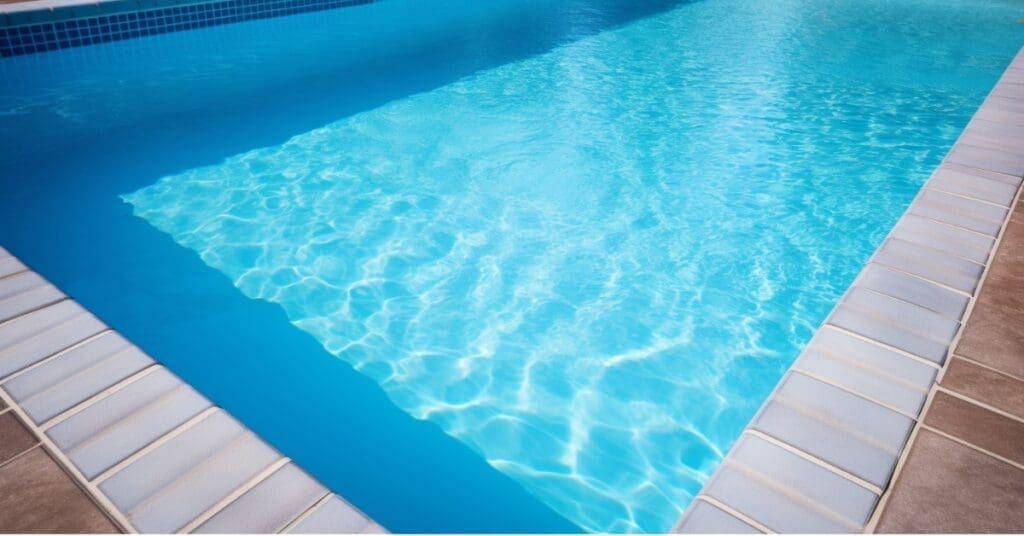Did you know that a well-built backyard pool adds an average of $36,000 in home value for Houston residents?
With the right design and construction, your private backyard oasis could pay off big time when you’re ready to sell. And, until then, you’ll have a perfect place to relax, entertain, and beat the heat!
That said, all pools are not created equal, and you’ll need to build smart if you want to see a strong return on investment.
In this article, you’ll learn about coping and decking, two of the most critical details in pool design. We’ll answer basic questions like “what is pool coping?” and “is coping the same as decking?” You’ll also come away with tips on what to use for pool coping and what is the best decking to put around a pool.
Read on for all the information!
What Is Pool Coping?
If you’ve ever held on to the edge of a pool and kicked, what you were actually grasping was coping.
Coping can be made from various materials and is used to separate a pool from the solid ground of the decking or landscaping around it. This seals and protects the pool’s perimeter, keep water off of nearby surfaces, and prevents potential slips at the water’s edge.


What To Use for Pool Coping
Believe it or not, coping can greatly impact how your pool looks. The most commonly used materials include:
- brick
- concrete
- natural stone
- pavers
Take a look at this design gallery and note the differences in each pool’s trim. You’ll see a wide variety of coping represented, with everything from ultra-modern to classic styles.
Different Kinds of Pool Coping
In addition to selecting a substrate, you’ll need to decide on a style for your coping.
Of course, you’ll want to choose a design that offers a solid surface that swimmers can hold on to it. But, past that, it’s up to you to select a wide or narrow look, coping with a blunt or rounded edge, and something that serves as an accent or blends seamlessly with the rest of your decking.
Is Coping the Same as Decking?
In a word, no.
Think of coping as a transitional space between your pool and its surrounding decking. So, even if you’ve selected a style that matches your decking, there will be some differences.
During a pool’s construction process, materials like steel are used to reinforce the bond and walls. Coping disguises these materials.
It is also designed at a slight slant, directing splashed water away from the pool and toward floor drains. This keeps water away from the pool’s shell, and makes it safer to enter and exit the water.
Properly installed coping will also keep dirt, leaves, and other debris away from the water. It can also be helpful for securing a pool cover.
What Is the Best Material for Pool Coping?
Which kind of coping works best for you will depend on a variety of factors.
Start by considering your project’s overall budget. Coping can be surprisingly costly, especially if you opt for high-end natural stone.
No matter what material you prefer, coping should be sturdy, durable, easy to maintain, and non-slip. It should also be tough enough to stand up to the harsh weather conditions that Texas is famous for!
If your pool is in direct sun, you might want to install a material that is heat-resistant.
Lastly, you’ll want to opt for a material that blends well with your decking, landscaping, outdoor furniture, and more. Consider the colors and textures that will be used nearby so that nothing clashes.
What Is the Best Decking To Put Around a Pool?
Your pool’s coping is absolutely essential, but it isn’t the only big feature that you’ll need to shop for. The decking that you select will be just as important!
The options are nearly limitless, including pavers, brick, cement, natural stone, and even wood. There are also a variety of sustainable materials to choose from, which can make a big difference if you’re going green at home.
Just like when shopping for coping, you’ll want to consider price and aesthetics. That way, whatever theme or look you’ve selected feels continuous and natural.
Be sure that you’ve chosen material that’s comfortable to walk on all year round. Depending on how much shade your yard has, you might also rule out some stonework that heats up. Keep in mind that constant light can also shorten the life of some composite materials.
Your decking should also be slip-resistant, even when the water has gathered on its surface. This can prevent slip and fall accidents and accidental drownings alike.
Lastly, it’s essential to opt for decking that won’t be damaged by exposure to water. Some unfinished wood can stain, warp, and discolor. And some exotic materials might be discolored by chlorine.
Let’s Get This Project Started!
Now that you know a bit more about the different kinds of pool coping and decking, you’re ready to start making some big design decisions. But, we don’t suggest that you go it alone!
Contact Precision Pools & Spas to learn how our expertise can make your backyard dreams a reality.
We’re happy to help you decide the best material for pool coping and decking for your specific project and other details to help bring your backyard to life. We offer custom pool and spa design and construction throughout the greater Houston area and have decades of experience serving customers just like you!
And better yet, we offer inground swimming pool build specials. So before you leave, make sure to check out our pool specials.
The Texas counties we serve; Harris, Matagorda, Wharton, Brazoria, Fort Bend, Galveston, Chambers, Jefferson, Hardin, Liberty, Harris, Montgomery, Waller, Austin, Colorado, Washington, Grimes, Brazos, Walker, San Jacinto. Polk, Trinity, Houston and beyond. Do not see your county here, get in touch.
